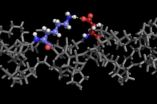(Press-News.org) CHICAGO – Administration of the corticosteroid dexamethasone to children during a tonsillectomy was not associated with excessive, serious bleeding events following surgery compared to patients who received placebo, according to a study in the September 26 issue of JAMA.
Tonsillectomy is exceedingly common, with a reported increase in tonsillectomy rates in children younger than 15 years from 287,000 to 530,000 per year over the past decade. Although safe, adenotonsillectomy can result in significant complications, according to background information in the article. "Although complications are infrequent because tonsillectomy is so common, the absolute number of children experiencing tonsillectomy complications is formidable." Corticosteroids are often given to children undergoing tonsillectomy to reduce postoperative nausea and vomiting; however, previous research has suggested that corticosteroids may increase the risk of hemorrhage during and after surgery.
"A recent randomized trial studying the dose response of perioperative dexamethasone to postoperative nausea and vomiting [PONV] in children undergoing tonsillectomy was prematurely terminated due to an increased risk of postoperative hemorrhage. The outcomes of the trial suggested that a single dose of intraoperative dexamethasone significantly increased post-tonsillectomy hemorrhage events. In light of these findings, there is a need to reassess the safety profile for dexamethasone when used during tonsillectomy," the authors write.
Thomas Q. Gallagher, M.C., U.S.N., of the Naval Medical Center Portsmouth, Va., and colleagues performed a clinical trial to examine bleeding events in children associated with dexamethasone use during tonsillectomy. The multicenter, randomized trial included 314 children ages 3 to 18 years undergoing tonsillectomy without a history of bleeding disorder or recent corticosteroid medication use. The study was conducted between July 2010 and December 2011 with 14-day follow-up. The researchers tested the hypothesis that dexamethasone would not result in 5 percent more bleeding events than placebo using a noninferiority (outcome not worse than treatment compared to) statistical design. Patients received a single perioperative dose of dexamethasone or an equivalent volume of saline.
The primary outcome measured was rate and severity of post-tonsillectomy hemorrhage in the 14-day postoperative period using a bleeding severity scale (level I, self-reported or parent-reported postoperative bleeding; level II, required inpatient admission for postoperative bleeding; or level III, required reoperation to control postoperative bleeding).
One hundred fifty-seven children (median [midpoint] age, 6 years) were randomized into each study group, with 17 patients (10.8 percent) in the dexamethasone group and 13 patients (8.2 percent) in the placebo group reporting bleeding events. The overall rate of bleeding events for all levels was 30 out of 314 (9.6 percent). The researchers found that in an intention-to-treat analysis, the rates of level I bleeding were 7.0 percent (n = 11) in the dexamethasone group and 4.5 percent (n = 7) in the placebo group; rates of level II bleeding were 1.9 percent (n = 3) and 3.2 percent (n = 5), respectively; and rates of level III bleeding were 1.9 percent (n = 3) and 0.6 percent (n = 1), respectively.
"The dexamethasone treatment failed to show noninferiority for the level I bleeding, but did demonstrate that the bleeding rate with dexamethasone is not more than 5 percent greater than that with placebo (noninferiority) for both level II and III bleeding events. The data was stratified for primary vs. secondary bleeding events and a decrease in level II and level III bleeding events in both groups was noted," the authors write.
"In conclusion, in this prospective, randomized study of 314 children undergoing tonsillectomy, perioperative dexamethasone administration was not associated with more level II or III bleeding events than placebo as shown by noninferiority. Increased subjective (level 1) bleeding events caused by dexamethasone could not be excluded because the noninferiority threshold of 5 percent was crossed," the authors write.
###
(JAMA. 2012;308[12]:1221-1226. Available pre-embargo to the media at http://media.jamanetwork.com)
Editor's Note: Please see the article for additional information, including other authors, author contributions and affiliations, financial disclosures, funding and support, etc.
To contact corresponding author Christopher J. Hartnick, M.D., call Mary Leach at 617-573-4170 or email Mary_Leach@meei.harvard.edu.
Using corticosteroid for children undergoing tonsillectomy may not increase risk of serious bleeding
2012-09-26
ELSE PRESS RELEASES FROM THIS DATE:
Pre-op steroids to prevent nausea do not significantly increase post-op bleeding
2012-09-26
Boston (Sept. 25, 2012) — Tonsillectomy is exceedingly common, with a reported increase in tonsillectomy rates in children younger than 15 years from 287,000 to 530,000 per year over the past decade. Although safe, adenotonsillectomy can result in significant complications, such as aspiration and bleeding. Complications are infrequent, but because tonsillectomy is so common, the absolute number of children experiencing tonsillectomy complications is formidable.
Corticosteroids are often given to children undergoing tonsillectomy to reduce postoperative nausea and vomiting; ...
Most European languages in danger of digital extinction
2012-09-26
Scientists from The University of Manchester were part of a European team of researchers who concluded that digital assistance for 21 of the 30 languages investigated is 'non-existent' or 'weak' at best.
The report coincides with the European Day of Languages [SEPTEMBER 26], a day which recognises the importance of fostering and developing the rich linguistic and cultural heritage of our continent.
Languages spoken by a small number of people could be at risk because they do not have technological support, the report by META-NET, a European network of excellence that ...
Future health risks for obese children may be greater than previously thought
2012-09-26
Research: Cardiovascular disease risk in healthy children and its association with body mass index: systematic review and meta-analysis
Editorial: Obesity in children and adolescents
Being obese as a child or adolescent may have a larger effect on future health than previously thought, suggests a study published on bmj.com today.
It comes as New York City passes a ban on large-size sugary drinks to help tackle obesity and related health problems in the US. MPs are now calling on the government to introduce similar legislation in the UK.
Researchers at the University ...
Should celebrities get involved in public health campaigns?
2012-09-26
Simon Chapman, Professor of Public Health at the University of Sydney thinks the extra publicity that celebrities provide can help promote public health. He acknowledges that celebrities are not experts but says, unlike many experts, they "often speak personally and bring compelling authenticity to public discourse."
He says those concerned about celebrities in health campaigns "invariably point to examples which have gone badly wrong or which fail to change the world forever" but argues "they are silent about the many examples of celebrity engagement that have massively ...
Medical screening for older drivers is misguided, argues senior doctor
2012-09-26
Personal View: Medical screening of older drivers is not evidence based
Medical screening of older drivers is misguided and typifies a "worrying lack of due diligence" by the medical profession, warns a senior doctor on bmj.com today.
Professor Desmond O'Neill, Consultant Physician in Geriatric and Stroke Medicine at Trinity College Dublin, argues that older drivers not only have an enviable crash record, but they also raise traffic safety among other generations: the risk of serious injury to children is halved if driven by grandparents rather than parents. "Yet the ...
Backpack-toting birds help UBC researchers reveal migratory divide, conservation hotspots
2012-09-26
By outfitting two British Columbia subspecies of Swainson's thrushes with penny-sized, state-of-the-art geolocators, University of British Columbia researchers have been able to map their wildly divergent migration routes and pinpoint conservation hotspots.
"Birds of a feather do not necessarily flock together," says Kira Delmore, a PhD student with UBC's Department of Zoology and lead author of the paper. "Our teams of thrushes took dramatically different routes to get to their wintering grounds, either south along the west coast to Central America, or southeast to Alabama ...
Doctors' 'gut feeling' should not be ignored
2012-09-26
Doctors who experience a gut feeling about serious illness when treating a child in primary care should take action upon this feeling and not ignore it, a study published today on bmj.com suggests.
Serious infection can easily be missed in young children and making a diagnosis has been described as "like finding a needle in a haystack". A clinician's intuitive feeling that something is wrong, even after examination that suggests otherwise, appears to have diagnostic value, even greater diagnostic value than most symptoms and signs. Studies have suggested it should be ...
Rice University lab encodes collagen
2012-09-26
HOUSTON – (Sept. 25, 2012) – The human body is proficient at making collagen. And human laboratories are getting better at it all the time.
In a development that could lead to better drug design and new treatments for disease, Rice University researchers have made a major step toward synthesizing custom collagen. Rice scientists who have learned how to make collagen – the fibrous protein that binds cells together into organs and tissues – are now digging into its molecular structure to see how it forms and interacts with biological systems.
Jeffrey Hartgerink, an associate ...
Hubble goes to the 'eXtreme' to assemble the deepest ever view of the universe
2012-09-26
The Hubble Ultra Deep Field is an image of a small area of space in the constellation of Fornax (The Furnace), created using Hubble Space Telescope data from 2003 and 2004. By collecting faint light over one million seconds of observation, the resulting image revealed thousands of galaxies, both nearby and very distant, making it the deepest image of the Universe ever taken at that time.
The new full-colour XDF image is even more sensitive than the original Hubble Ultra Deep Field image, thanks to the additional observations, and contains about 5500 galaxies, even within ...
Oropharyngeal cancer patients with HPV have a more robust response to radiation therapy
2012-09-26
(SACRAMENTO, Calif.) — UC Davis cancer researchers have discovered significant differences in radiation-therapy response among patients with oropharyngeal cancer depending on whether they carry the human papillomavirus (HPV), a common sexually transmitted virus. The findings, published online today in The Laryngoscope Journal, could lead to more individualized radiation treatment regimens, which for many patients with HPV could be shorter and potentially less toxic.
HPV-related cancers of the oropharynx (the region of the throat between the soft palate and the epiglottis, ...

